Forest thefts are more useful than banks
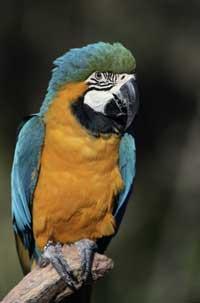
The most prestigious robberies are those made in banks, museums or buildings with strict security measures. This is a way to get a lot of money from the blow, but also the risk of bed. Another type of robbery is that of wild fauna and flora, which gives a lot of money without just danger.
The only condition for starting this "trade" is that there is no fear of identifying species and introducing them into forests. As we have said, it is a risk-free trade and source of many funds. For those who do not believe, two data: the black market for wild animals moves 20 billion dollars a year and only 0.45% of the animals that are stolen. What else does a professional thief ask for?
But if we analyze this data from the point of view of those who want to protect the fauna rather than from the point of view of the thief, the situation is considered worrying. In addition, although this data is maintained, the situation is aggravated if we take into account the scarce number of animals that survive. It is estimated that between 60% and 80% of captured animals die.
This illegal trafficking is one of the main causes of biodiversity decline, affecting 700 species in extinction and another 26,300 threatened. For example, some data are: 50,000 primates, 140,000 elephant-letagin, 5 million birds, 10 million reptile skins, 15 million mammal skins, 9 million orchids, 7 million cacti and 135 million tropical fish are traded each year.
Endangered animals are the most expensive and therefore the most sought after. The rope that ends with the disappearance of the species is the illegal trafficking of animals.
Exotic collections, leather and... poison
Buyers are mainly American, European or Japanese and sellers are the poor countries of South America, Africa and North East Asia. But, as is known, the money obtained from traffic remains in the hands of traffickers with a monopoly on traffic.
These animals are bought as ornaments, for fashion reasons, to expand the collection or as pets. However, to access this type of animals it is essential to be willing to pay a lot of money.
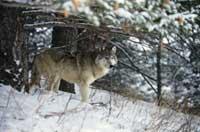
The Boa Snake is one of the cheapest exotic animals available on the black market. Its price is around 600,000 pesetas. The poisonous snake is more expensive, it can cost 3 million pesetas (120,000 pounds). Its price is similar to that of jaguar skins or the blue papa?o of Brazil. Ara or Guakamaio can cost 9 million pesetas (360,000 pounds) and finally a gorilla is sold for 10-15 million pesetas (about 500,000 pounds).
But the animal is not necessarily sold alive. On the market there are many products made with tusks or animal leather, from shoes to all kinds of ornaments. The oriental dangas sold in Yemen, for example, are from rhinoceros branches and cost 2.25 million pesetas (900,000 pounds).
But the illegal traffic that destroys wildlife is not limited to increasing the particular collections of rich screechers, selling the skin or having as a decorative element. Laboratories also have a lot of interest in keeping this traffic. The pharmaceutical industry, for example, is willing to pay expensive to purchase substances from some poisonous animals. Some snake and frog poisons contain high-value active ingredients used in drugs to control male hypertension. A single gram of this substance can cost $1,200 on the black market.
Wild treatment for wild animals
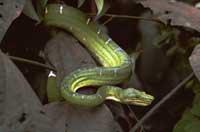
The issue of exotic animals is evident. But whatever the motive that drives us to buy, the massacre is the same. Dozens of deaths per animal sold. Why? Clumsy hunting techniques, unsustainable long journeys and insufficient living conditions.
Hunting techniques are scavengers. Birds, for example, are caught with nets and many die entangled between them. In other cases, the hunters kill the team leader, so if the animal is not in the hands of the hunters, it will be killed adrift.
Not all captured animals end up being part of the private zoos of the rich. Some, like elephants or tigers, respectively, are hunted for their tusks and their skin. Buyers are only interested in an organ or part of the animal that it is and therefore kill the animal to cause it.
As we have said, if the exotic animal is for a collector, the goal of the trafficker is the survival of the animal. But that, probably, is more difficult than catching the animal. It is often unsustainable for animals for the long journeys of many kilometers made in cages, closets or closed boxes. In these bad conditions many die stepped or drowned. Thus, illegal trafficking endangers the survival of many species for each animal that dies.
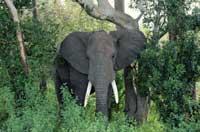
Animals that fall into the hands of traffickers are brutally mistreated. For example, birds pierce their eyes so they don't see light. Otherwise, upon noticing the light they would begin to sing and not overcome the controls of the limits. Macaws remove the sternum to avoid screaming.
But in addition to these wild tricks to overcome borders, they also make animals all to improve their appearance. Among other things, they paint feathers to animals of vivid colors, like parrots. Who is more wild the animal itself or trafficker?
How to deal with animal trafficking?
The first international agreement on the creation of an international regulation on wildlife trafficking was signed in Washington in 1973. 150 countries of the world participated and is known as CITES. Today, at different levels, it protects 30,000 species of plants and animals. According to CITES rules, for the export or import of any of the protected species, the necessary documentation must be submitted to customs. Regulations may vary slightly from country to country, but the goal is unique. However, it is known that animals moving in the black market are not present in customs, so it is necessary to intensify controls.
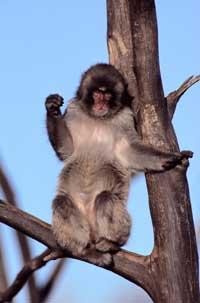
On the other hand, in order to cope with this traffic, a network of information and cooperation is being created in South America. The biodiversity of these countries is rich and to set the first standards to reduce damage, the first South American Conference on Illegal Animal Trafficking was held in July this year in Brazil. 150 experts gathered there.
One of the conclusions of this conference was that animals are not only exported but also sold in the stolen country itself. In Brazil, for example, there is a large illegal market in which many birds found in the jungle are sold. Consequently, the Brazilian Environment Institute announced the adoption of measures to increase control of these markets. But what to do with the thousands of animals captured? They don't seem to have a place to store all the animals they would find in one operation.
Therefore, it is urgent to create a return network as effective as the theft network. However, it is clear that animal trafficking is not as controlled as arms and drugs, and much remains to be done. The first step in developed countries can be to reduce the issue of exotic animals and products made with their skin or canines.
Published in the supplement Natura de Gara.
Buletina
Bidali zure helbide elektronikoa eta jaso asteroko buletina zure sarrera-ontzian


